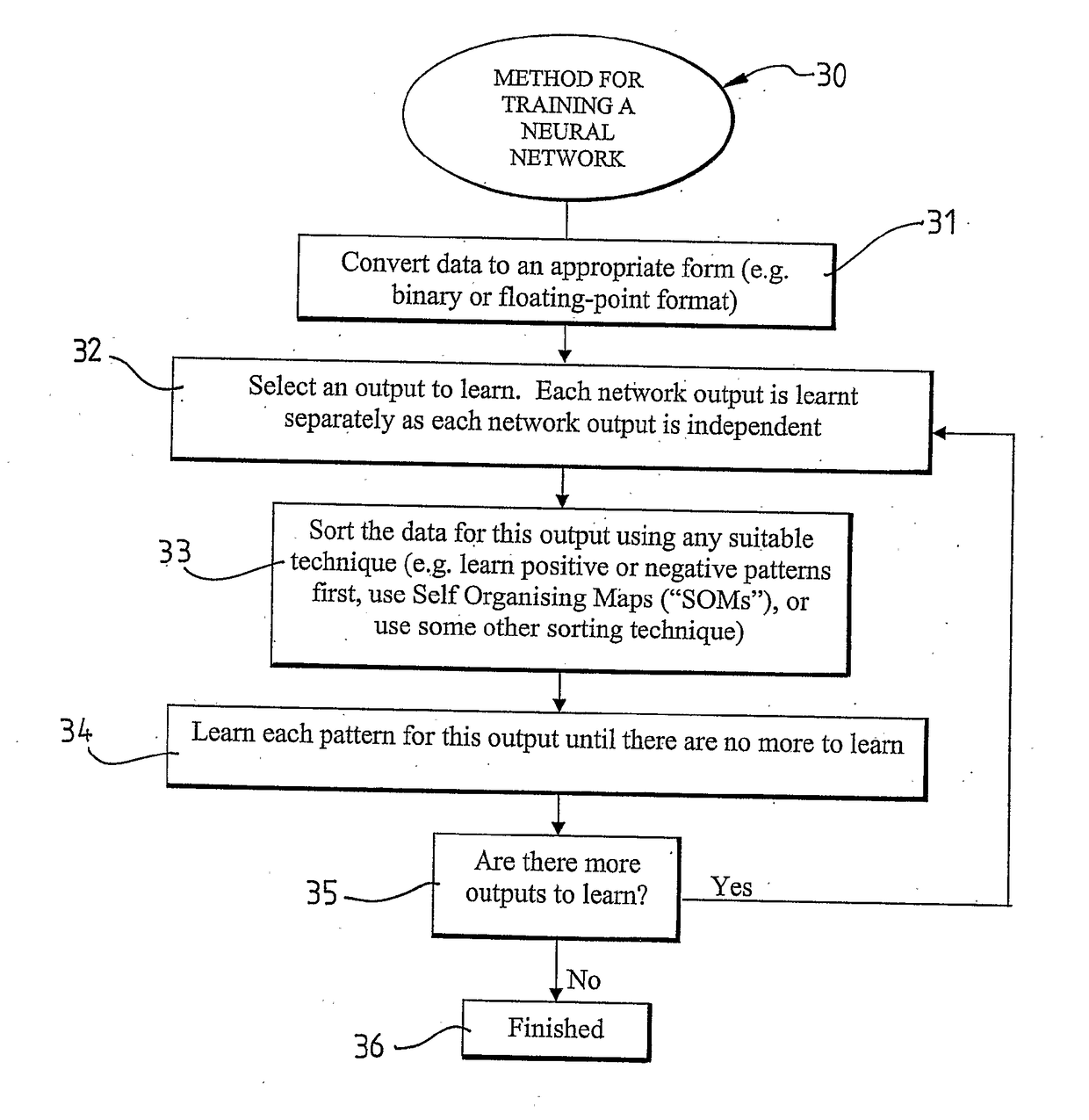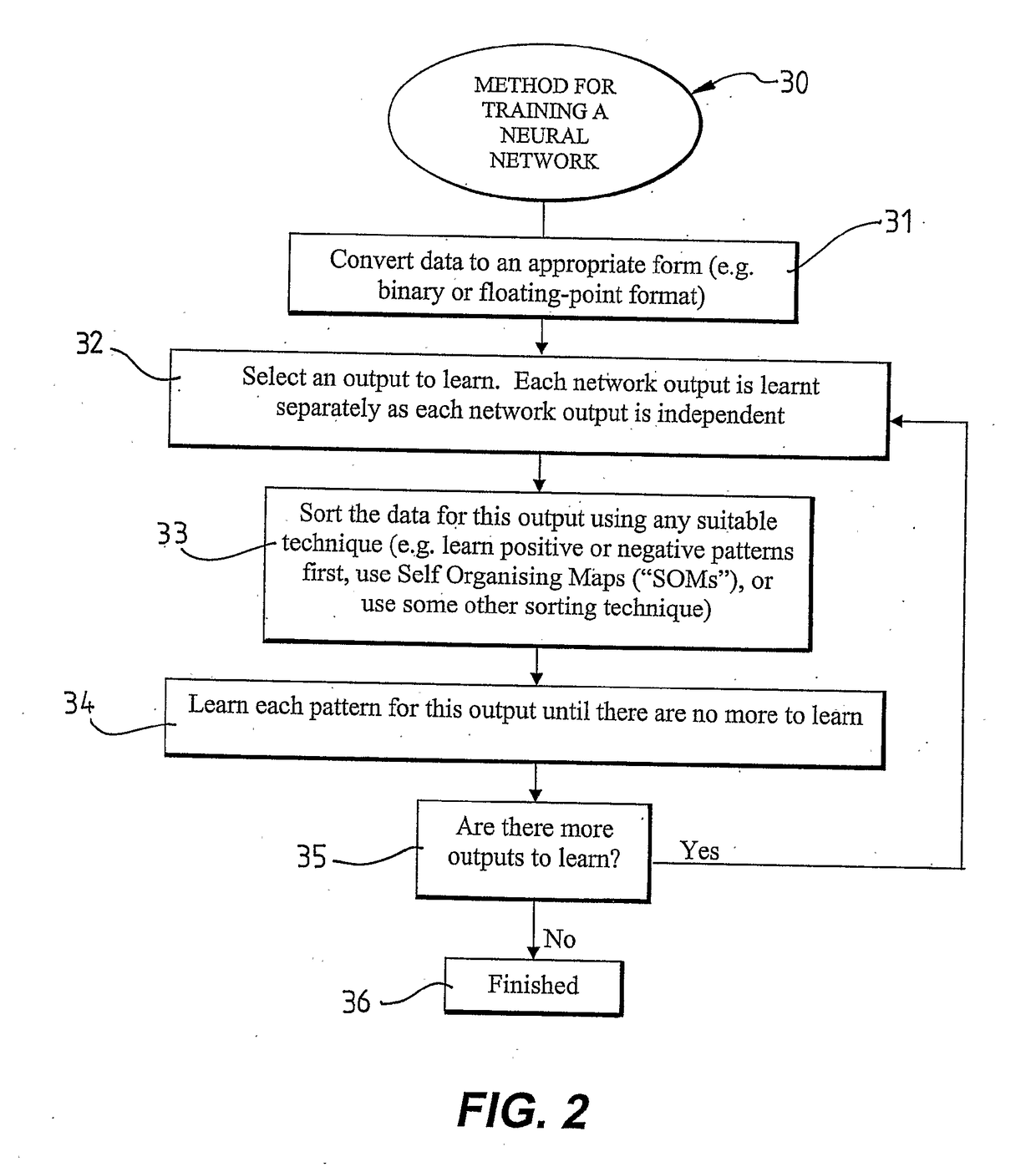Neural network, computer readable medium, and methods including a method for training a neural network
a neural network and neural network technology, applied in adaptive control, process and machine control, instruments, etc., can solve the problems of mcculloch-pitt model of neuron abandonment, learning algorithm of Rosenblatt not working for more complex data sets, and training rule that would allow multiple layers of ltgs
- Summary
- Abstract
- Description
- Claims
- Application Information
AI Technical Summary
Benefits of technology
Problems solved by technology
Method used
Image
Examples
Embodiment Construction
[0096]The present disclosure in one aspect provides a novel approach to training neurons. This approach defines relationships between input connections into a neuron and an output, thus it makes the task of rule extraction simple. The method of training neurons according to the disclosure allows generalisation and data learnt to be recalled as with neurons trained with traditional methods. In addition, it uses a simple test to determine whether a neuron can or cannot learn an input vector. This test forms a natural criterion for adding one or more neurons into a NN to learn a feature in a data set. Neurons can either be allocated to hidden layers, or a new output layer can be added according to the complexity of a data set.
[0097]Hence the NN training method of the present disclosure can be termed a Dynamical Relational (hereinafter “DR”) training method.
[0098]Since a NN trained according to the DR training method of the can be tested to determine whether an input vector can be learn...
PUM
 Login to View More
Login to View More Abstract
Description
Claims
Application Information
 Login to View More
Login to View More - R&D
- Intellectual Property
- Life Sciences
- Materials
- Tech Scout
- Unparalleled Data Quality
- Higher Quality Content
- 60% Fewer Hallucinations
Browse by: Latest US Patents, China's latest patents, Technical Efficacy Thesaurus, Application Domain, Technology Topic, Popular Technical Reports.
© 2025 PatSnap. All rights reserved.Legal|Privacy policy|Modern Slavery Act Transparency Statement|Sitemap|About US| Contact US: help@patsnap.com



